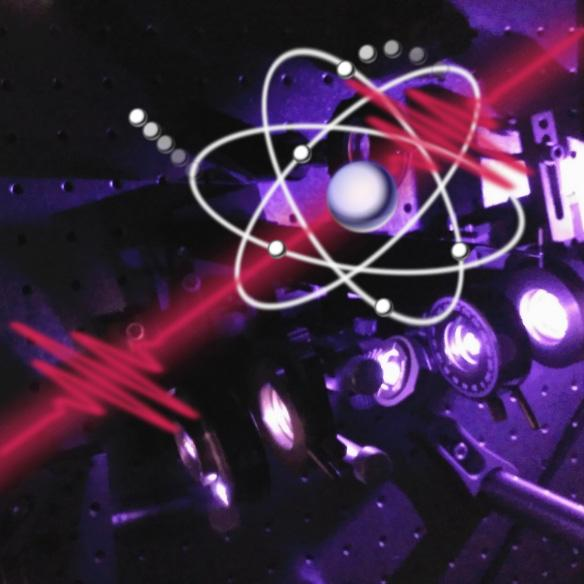By Matt Pullen, B.Sc.Feb 17 2020
Led by Prof. Dr. Frank Stienkemeier and Dr. Lukas Bruder, a team of researchers at the Institute of Physics of the University of Freiburg has successfully observed, in real-time, ultrafast quantum interferences, or the oscillation patterns, of electrons that occur in the atomic shells of rare gas atoms.
 Laser pulses generate and track electronic quantum interference in an atom. Image Credit: AG Stienkemeier.
Laser pulses generate and track electronic quantum interference in an atom. Image Credit: AG Stienkemeier.
The researchers were able to visualize oscillations with a period of nearly 150 attoseconds, where one attosecond is one-billionth of a billionth of a second. For this purpose, the researchers used exclusively prepared laser pulses to excite rare gas atoms.
Subsequently, the response of the atoms was tracked by using a new measurement method that allowed the researchers to analyze quantum mechanical effects in atoms and molecules at very high time resolution. The study outcomes have been reported in the most recent edition of Nature Communications.
Several chemical reactions, like the breaking of bonds in molecules, are initiated by the light absorption. Immediately after the absorption, there is a change in the distribution of the electrons in the atomic shell, which considerably affects the further course of the reaction. This change occurs in a very quick manner, with the timescales reaching into the attosecond range.
Spectroscopic technologies that were employed earlier involved the use of visible laser pulses. These technologies are not quick enough to monitor such processes. Therefore, at present, scientists across the globe are creating novel laser sources and sufficient spectroscopic technologies in the X-ray and ultraviolet ranges.
Researchers led by Stienkemeier have optimized coherent pump-probe spectroscopy, a technology known from the visible spectrum range, into the ultraviolet range. This is the spectral range that lies between ultraviolet light and X-ray radiation. They performed this by preparing a series of two ultrashort laser pulses in the extreme ultraviolet range at the FERMI free electron laser in Trieste, Italy.
The pulses, which were isolated by an accurately defined time interval, had an exactly defined phase relationship with one another. The first pulse initiates the process within the electron shell (i.e. pump process). The second pulse investigates the electron shell status at a later point (i.e. probe process). The researchers altered the phase relationship and the time interval to reach conclusions on the temporal development within the electron shell.
The greatest challenge was to achieve precise control over the pulse properties and to isolate the weak signals.
Andreas Wituschek, Researcher, Institute of Physics, University of Freiburg
Wituschek was in charge of the experimental procedure.
The physicists from the University of Freiburg investigated the rare gas argon, besides others. In argon, the pump-pulse forms a unique configuration of two electrons inside the atomic shell: this configuration breaks down, a single electron leaves the atom in a short time span and the atom eventually stays behind as an ion.
For the first time, the scientists were successful in visualizing the instant temporal decay of the quantum interference as one electron left the atom.
This experiment paves the way for many new applications in the study of atomic and molecular processes after selective stimulation with high-energy radiation in the extreme ultra-violet range.
Dr Lukas Bruder, Researcher, Institute of Physics, University of Freiburg
The study was financially supported within the framework of the International Graduate School CoCo, established by the German Research Foundation (DFG), and by the COCONIS project of the European Research Council (ERC) and LoKoFEL project of the Federal Ministry of Education and Research (BMBF).